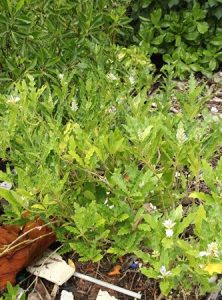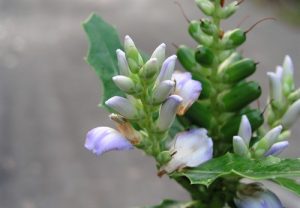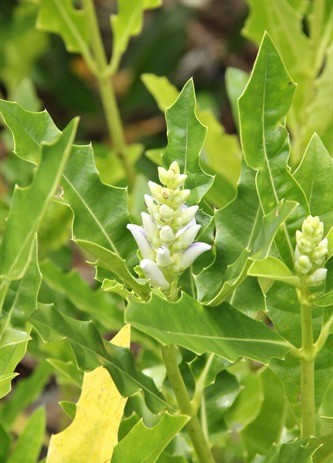MANGROVE SPECIES
ABU TAHER PRINCE
Tour Guide
Acanthus ilicifolius L.
Local name: Hargoza
English name: Holy mangrove, Holly-leaved acanthus, Sea holly
Family: Acanthaceae

Description
This mangrove species is a unique and resilient plant, recognized as a pioneer evergreen shrub that grows up to 2 meters in height. It is semi-woody, less branched, and often spiny, with smooth bark ranging from reddish-brown to greenish-grey. The base of the stem features smaller sporadic lenticels along with aerial and stilt roots. Its leaves are simple, short-petiolate, shiny, and waxy with sharp spinous teeth along the margins, though leaves grown in deep shade may lack spines. Occasionally, salt crystals can be observed on the leaf surfaces.
The flowers of this species are light blue to purple, characterized by a single large petal. Its fruits are slightly flattened capsules containing four seeds. The plant exhibits hypogeal germination and propagates vegetatively through stem cuttings or rooting from horizontal stems. It thrives in strong saline conditions and adapts to environments ranging from full sunlight to deep shade, particularly when freshwater flow is present.
This species is commonly found along the coasts of tidal swamps, riverbanks, tidal creeks, protected seashores, and low swampy areas within mangrove forests or their surrounding regions. In the Sundarbans, it is frequently associated with other mangrove species such as Avicennia officinalis, Avicennia alba, Sonneratia apetala, Excoecaria agallocha, and Ceriops decandra.
Distribution
This species is found across a wide range of regions, including Bangladesh, India, Pakistan, Sri Lanka, Thailand, Cambodia, Vietnam, Indonesia, Malaysia, Singapore, China, Papua New Guinea, Taiwan, the Philippines, northern Australia, and various Pacific islands. Within Bangladesh specifically, it is present in the Sundarbans and Chakaria Sundarbans, as well as coastal areas in Chittagong, Cox’s Bazar, Noakhali, Barisal, Pirojpur, Bagerhat, Khulna, and Satkhira districts.

Form
* — Habit: Shrub
* — Height: 0.5-2 m
* — Diameter: 1-1.5 cm
* — Bark: Smooth, reddish brown to greenish
Flowering
* — It is used as hedge plant for fencing
* — Entire plant is placed in rice sacks to keep
the rice dry
* — Soil stabilization for slope, embankment
and riverbank
* — PlanWt parts have medicinal uses
Leaves
* Arrangement: Simple, opposite
* Blade shape: Oblong to elliptical
* — Margin: Serrate with sharp spines
« Apex: Acute
* — Base: Acute
° Upper surface: Green
* Lower surface: Green
* — Venation: Pinnate/net
* — Size: 5-15 cm long

Flowers
* — Inflorescence: Spike, terminal
¢ Petals: 1
* — Sepals: 4
* Stamens: 4
e — Size: 2-3 cm long
* — Others: Bisexual
Fruits
* — Type: Capsule
* — Colour: Green
* — Texture: Glossy
* — Size: 2-2.5 cm long
Adaptation
* Aerial root
* — Lenticels
« — Stilt root

